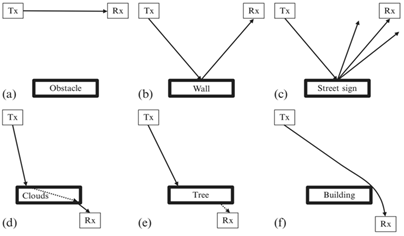Have you ever wondered that why home modems or routers are not as good as enterprise grade access points? Answer to this question seems to be obvious that enterprise access point is a very expensive piece of hardware as compare to home CPEs (customer premises equipment).
But still few questions come to mind….
- what is the standard for WiFi performance ?
- what is acceptable level of performance?
- what is not acceptable performance?
- or there is any standard at all for acceptable performance?
To understand this, we will have to understand that how WiFi equipment’s are certified and who certify this hardware.
Reason of writing on this topic to highlight what’s happening currently in home environment and what might happen in future which will lead towards better user experience in home.
Wi-Fi Alliance:
Wi-Fi Alliance is the worldwide network of the companies that brings you Wi-Fi. Hundreds of companies from multiple industries collaborate within Wi-Fi Alliance to drive the interoperability, adoption, and evolution of W-Fi globally.
The Wi-Fi Alliance’s focus on interoperability has been the driving engine of the explosive growth of the Wi-Fi market. Performance testing is intended to help (primarily) operators navigate the crowded field of products that interoperability has produced. Both interoperability and performance testing are important.
Wi-Fi Alliance issue:
Wi-Fi Alliance is a non-profit organization and not able force the rules such as how device shall perform in a real environment. Due to this reason it is possible that a Wi-Fi products i.e AP/CPE which can meet IEEE standard but might not provide good user experience in real environment.
What is tested:
WiFi alliance test devices based on IEEE specification. Secondly according to my personal opinion, I am not sure if they even carry out testing to ensure device is meeting all IEEE specification?
Device would be tested in RF isolated chamber against 1 given device. So, if it meets IEEE specification then all is well, and device will be certified.
Except hardware and software one of the biggest difference in-between enterprise access point and CPE is rigorous testing. Access points performance is tested against real environments and load etc but CPE is unlikely to be tested to keep the cost low.
RF Characteristics:
RF characteristics and 802.11 protocol are the biggest factors which dictates performance of Wi-Fi and user experience. An AP or CPE only tested as IEEE standard might perform well with 1 client station in a close proximity. However due to RF behaviour it will change user experience in real environment therefor devices must be tested in different and real environments before deployment.
RF characteristics:
- Absorption
- Reflection
- Refraction
- Scattering
- Free path loss
- Multipathing

(RF behaviour)
What Next:
I have highlighted the issues above that why CPEs does not perform well as compare to enterprise access points. Its service providers responsibility to test the devices against real environment and improve hardware and software.
Due to evolution of WiFi now service providers understand that to be competitive it’s very important to improve WiFi capability in devices. Broadband forum released first test draft TR-398 for service providers to follow.
Broadband Forum:
Broadband Forum is the communications industry’s leading organization focused on accelerating broadband innovation, standards, and ecosystem development. Broadband forum is also a non-profit industry organization composed of the industry’s leading broadband operators, vendors, and thought leaders, Broadband forum work to date has been the foundation for broadband’s global proliferation and innovation.
TR-398 Standard:
Broadband forum TR-398 provides a set of performance test cases with pass/fail requirement for 802.11n/ac implementation. Primary goal of TR-398 test standard is to provide set of test cases and framework to verify the performance in between AP/CPE and one or more stations.
Test include:
- RF capability
- Throughput performance
- Spatial consistency
- Airtime fairness
- Connection stability
- Stability/Robustness
Now services providers are keen to get their devices TR-398 certify which means they will go through some performance related testing. Broadband forum also has announced that TR-398 will be updated at the end of this year as well as during Mobile World Congress in February 2020.
More performance-based testing such as 802.11ax, audio, video, Mesh, channel selection etc will be part of release 1 and release 2.
Summary:
I believe this is a very positive step by broadband forum. It will create a benchmark for service providers and vendors to perform some performance-based testing. 802.11ax products are beginning to come to the market and it’s a good time for service providers to re visit their devices and improve WiFi capability in CPE’s for better user experience.